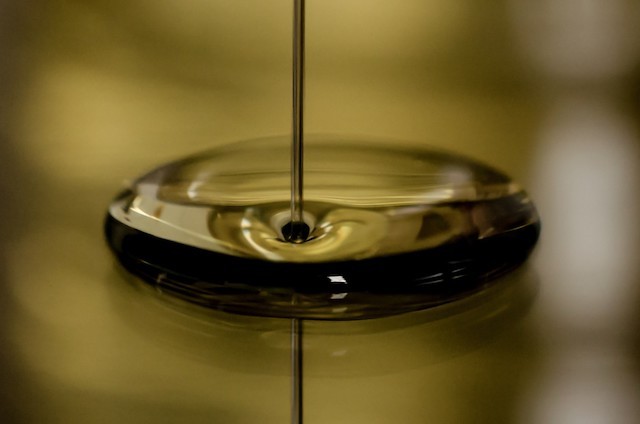Catalytic Reforming Explained: A Guide for Maintenance Professionals
12-09-24

Every reliability engineer knows that a single valve failure can bring an entire catalytic reforming unit to a grinding halt. When dealing with temperatures exceeding 900°F and highly corrosive environments, your choice of valves isn’t just about maintaining production—it’s about preventing catastrophic failures that could cost millions in downtime.
Catalytic reforming is a cornerstone of modern petroleum refining, transforming low-octane naphtha into high-value aromatics and hydrogen. But this critical process hinges on one often overlooked component: the valves that control, direct, and protect the flow of materials throughout the unit.
The consequences of valve failure in catalytic reforming extend far beyond immediate operational disruptions. From unexpected catalyst degradation to compromised safety systems, the ripple effects can impact your facility’s bottom line for months.
Understanding the Catalytic Reforming Process
Feedstock Preheating Stage
Within the preheat zone, naphtha feedstock undergoes heating to reach optimal reaction temperatures. Control valves in this stage must handle rapid temperature fluctuations while maintaining precise flow regulation. Isolation valves are equally crucial, enabling safe maintenance access during turnarounds.
Reactor Section Operation
The heart of catalytic reforming occurs across multiple reactors, where the most demanding valve applications exist:
- Reactor inlet valves face temperatures up to 900°F while controlling the flow of hydrogen-rich gas mixtures
- Inter-reactor flow control valves manage pressure drops between stages
- Emergency shutdown valves must respond instantly to protect expensive catalyst beds
Product Separation and Fractionation
The final stage involves separating reformate products and recycling hydrogen:
- High-pressure letdown valves handle the transition from reactor to separator conditions
- Bottom drain valves contend with catalyst fines and corrosive compounds
- Hydrogen recycle valves must maintain tight shutoff despite the presence of light gases
Throughout each stage, valves are critical control points that directly impact product quality, energy efficiency, and process safety.
Critical Valve Challenges in Catalytic Reforming
Temperature Management Demands
Operating at extreme temperatures creates unique valve integrity challenges:
- Thermal cycling causes repeated expansion and contraction
- Seat and seal materials must maintain their properties at 900°F+
- Traditional valve lubricants break down, leading to increased maintenance
Pressure and Flow Complications
Maintaining consistent pressure control presents several hurdles:
- Sudden pressure fluctuations during startup and shutdown
- High-velocity particle erosion from catalyst fines
- Complex pressure balancing requirements between reactor stages
Corrosion Resistance Requirements
The aggressive chemical environment demands exceptional material selection:
- Hydrogen embrittlement risks in metal components
- Chloride stress corrosion from process additives
- Sulfur compound exposure in specific feed streams
Key Valve Selection Criteria
Selecting the correct valve requires careful consideration of the following:
- Material compatibility with process conditions
- Seat and seal design for reliable tight shutoff
- Actuation speed for emergency shutdown scenarios
- Maintenance accessibility in tight spaces
Engineered Solutions for Catalytic Reforming
Self-Lapping Technology
In catalytic reforming environments, traditional valve seating faces rapid degradation. Everlasting Valves’ unique self-lapping rotation mechanism creates a continuously improving seal with each cycle. This design:
- Eliminates common seating wear issues
- Reduces maintenance frequency
- Extends valve service life in high-temperature applications
Materials Built for Extremes
The proprietary metallurgy used in these valves specifically addresses reforming unit demands:
- Chrome-moly steel construction withstands temperatures above 900°F
- Hardened surfaces resist erosion from catalyst fines
- Anti-corrosion materials stand up to chloride exposure
Conclusion
Reliable valve performance forms the backbone of successful catalytic reforming operations. From managing extreme temperatures to handling corrosive environments, the challenges faced in these units demand valve solutions that go beyond standard specifications. Understanding these demands helps maintenance professionals make informed safety and operational efficiency decisions.
Integrating advanced valve technologies, particularly those featuring self-lapping capabilities and specialized metallurgy, presents a compelling solution to the persistent challenges in catalytic reforming units. By addressing common failure points and reducing maintenance requirements, these innovations help facilities maintain peak performance while minimizing costly downtime.
Ready to enhance the reliability of your catalytic reforming unit? Contact Everlasting Valves today to discuss custom valve solutions engineered specifically for your facility’s needs. Our team of experts can help you select the correct valves to maximize uptime and minimize maintenance costs.